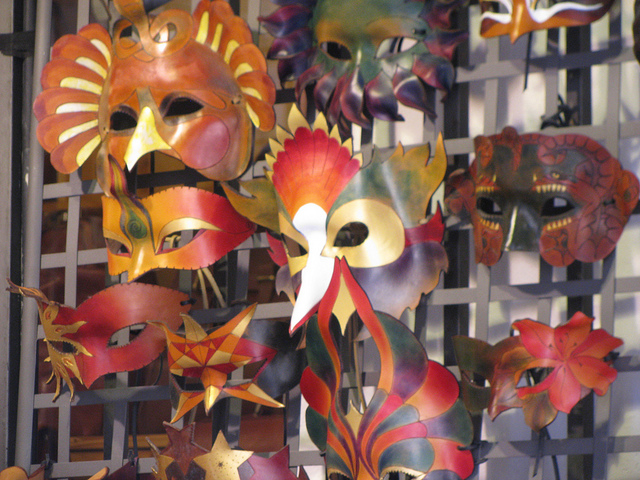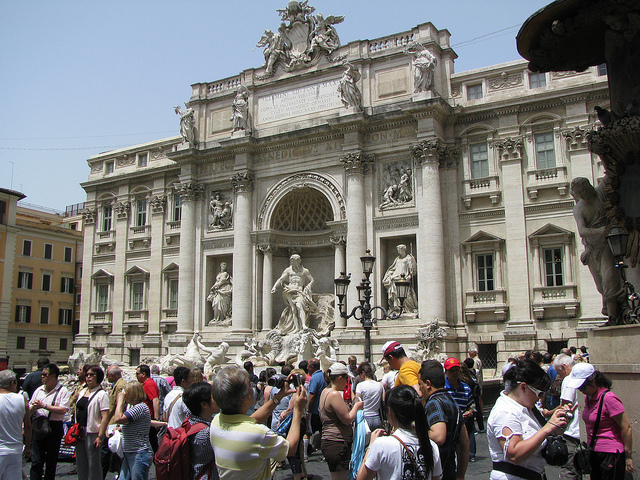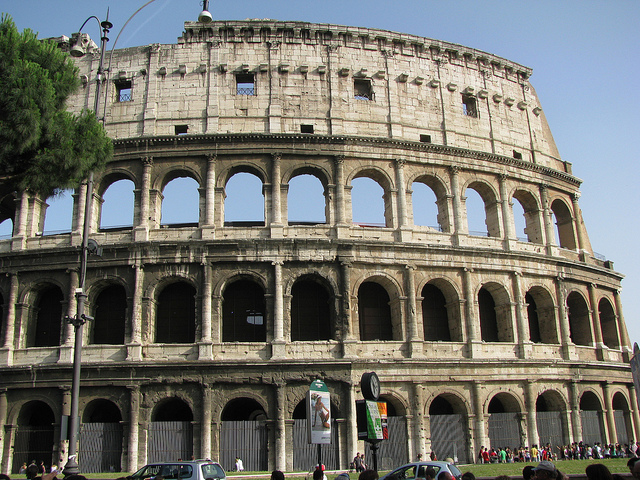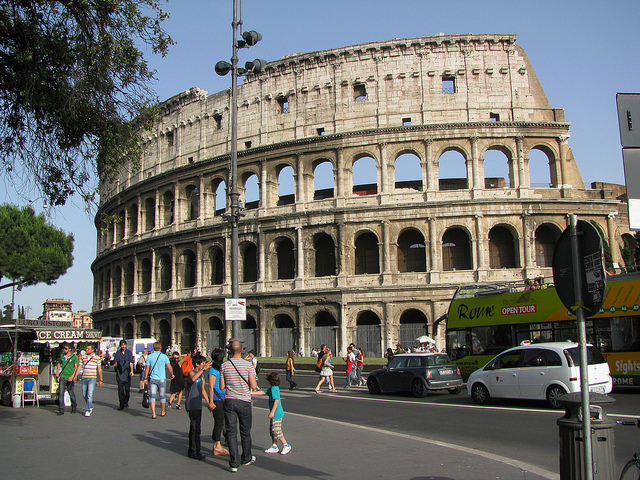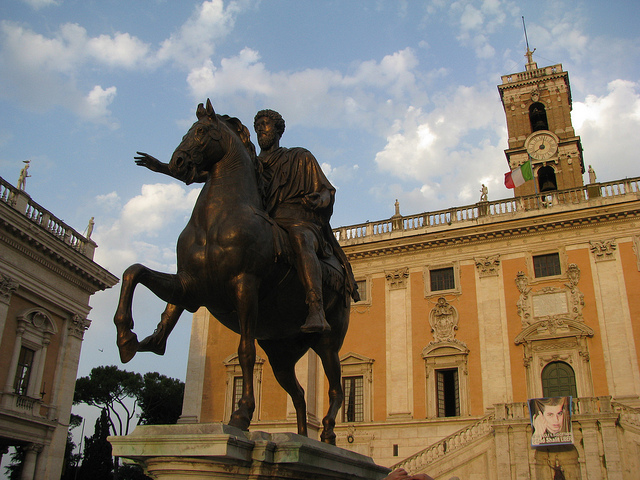Finally I reached the center of Orvieto, the Piazza del Duomo. Orvieto’s Cathedral, the Duomo, is one of the most stunning examples of 13th and 14th century architecture. Begun in 1290, this black and white striped structure with its colourful and gilded façade is definitely one of the world’s most stunning cathedrals. The highlight inside the church is the Chapel of San Brizio, with frescoes of the “Last Judgment” by Luca Signorelli.

The stunning Cathedral of Orvieto
The Piazza del Duomo itself is a very attractive gathering place and is also home to the tourist office, where I picked up some brochures about the town. Then I started heading back inside the narrow irregular streets of Orvieto and admired the pottery shops along Via del Duomo. To this day Orvieto is a center of traditional pottery-making. It is also known for the Orvieto Classico wine that is grown in the surrounding region.

Detail of the facade of the Cathedral of Orvieto
By now it was mid-day and I found a spot on the patio of a restaurant where I enjoyed a pizza and a salad, all the while watching the tourists walk by. I then walked around some more through the medieval streets of Orvieto and enjoyed the view from one of the lookout points at the western end of this hilltop town.

Typical pottery from Orvieto
A little while later I strolled back to the Piazza del Duomo and saw that an entire collection of classic cars had set up on the main square: the Modena Cento Ore Classic rally was on. This non-profit race features a variety of classic cars from the 1950s, 1960s and 1970s, including classic Porsches, Ferraris, Alfa Romeos, Aston Martins, Fiats, Jaguars and many more. A few of the vehicles were even built in the 1930s. Large crowds gathered to admire the shining chrome and classic lines of these vehicles.

Classic cars are lined in front of the Duomo of Orvieto
By 2 pm I made my way to the east side of town again, to the famous Pozzo di San Patrizio (the Well of St. Patrick), constructed at the orders of Pope Clement VII between 1527 and 1537. The intention of this well was to provide water to the hilltop town in the event of a siege, and the well is uniquely equipped with two spiral ramps with separate doors, which allowed mules to carry water without any obstructions in a one-way pattern. The well is more than 53 metres deep (174 feet) and is equipped with 70 windows to let in daylight.

Well of St. Patrick
It was now mid-afternoon and I decided to make my way back into Rome. So I took the funicular down from the hill and ended up chatting with a young Japanese lady who was also waiting for the train, but she was headed for Florence. She was a fashion designer who has been working in Milan for the last year and half and was really enjoying her time in Italy.

I love old doorknockers – Orvieto had many of them…
